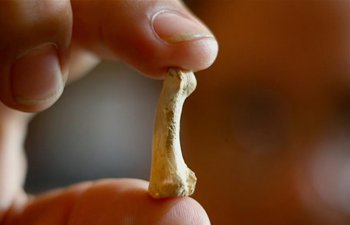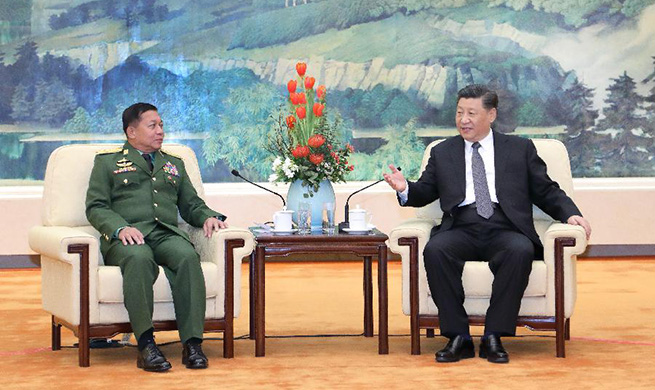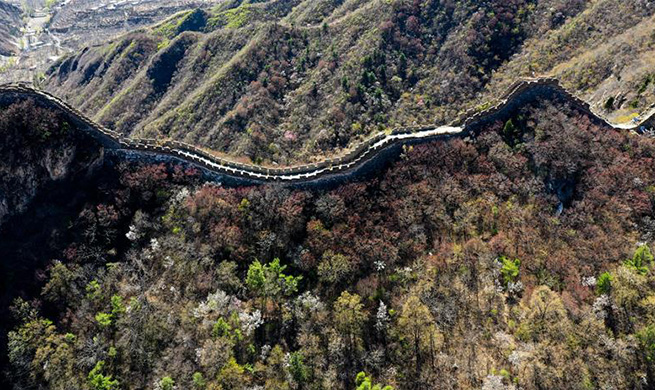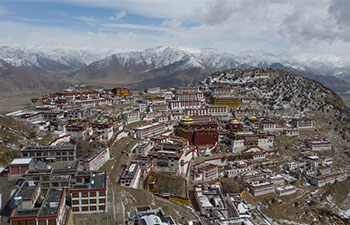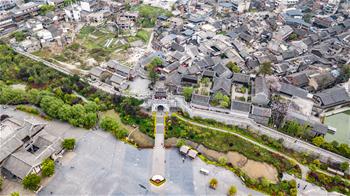SAN FRANCISCO, April 11 (Xinhua) -- New findings from a Stanford research program on Chinese immigrant workers who built the First U.S. Transcontinental Railroad in the 19th century broke a negative stereotype of those laborers and cast light on their mature business talent that even surprised their white bosses, a Stanford scholar said Thursday.
Roland Hsu, director of research of the seven-year-long Stanford program, the Chinese Railroad Workers in North America Project, told Xinhua during a photo exhibition honoring the Chinese rail workers that their research has changed the way people think about the Chinese who came to the United States in the 19th century.
"Traditionally, much of the research results, which are well-intentioned, identify the Chinese as victims as sort of (being) more passive for their suffering," he said.
"What we find is indeed they endured many hardships, but they were also very enterprising. And the Chinese who came are also very experienced on how to profit from their labor," Hsu explained.
The results of the project were displayed at a photo exhibition held in Stanford University Thursday, which also celebrated the 150th anniversary of the completion of the landmark U.S. railway that spanned across the American continent.
During the railway's construction, Hsu said, the Big Four investors of the Central Pacific Railroad, including Stanford University founder Leland Stanford, Collis Huntington, Mark Hopkins and Charles Crocker, could not find 10,000 to 12,000 Chinese workers to build the railroad.
Therefore, they asked some Chinese to find other Chinese, Hsu said. "Those were sort of sub-contracting that showed real business skill, or business acumen. That's an impact on our understanding of who the Chinese were."
"In my opinion, the most important discovery is the business talent the Chinese came with, and they were not all menial laborers who were exploited. There were many who actually ... controlled quite a large labor force, and in that way changed the reputation of the Chinese in the white business leaders' eyes," said the Stanford scholar.
By the time the 3,077-km-long First Transcontinental Railroad was officially completed on May 10, 1869, the Big Four testified to the U.S. Congress the excellence of the Chinese, Hsu said.
"If it weren't for the Chinese, we would have no railroad," he quoted the Big Four as saying.
Hsu went on to say that although they could not identify those Chinese workers personally due to the lack of letters or other papers linking with their personal identification, they knew their collective identity as "talented, courageous."
He said their evidence is based on finding the payroll records.
"We were able to find the railroad construction company's payroll records. The big journals with all of the paid, we find Chinese names. We did the math. And that's where we find the sub contractors," he explained. "Because for such a large labor force, any business has to use sub-contracting."
"We find the Chinese sub-subcontractors sub-contracting other Chinese workers," he said.
Hsu noted that his advanced research showed that the Chinese workers, who might have come from poor villages in China, developed a knack for business at home and not in the United States.
A few of them even partnered with white locals on business endeavors, and "they made a big business, really big business, in thousands and thousands of dollars," which demonstrated their leadership in construction projects, Hsu said.
He said Thursday's exhibition is meant to make the research available to members of the public interested in learning America's Chinese heritage, the history of the American west, and a story of globalization where North America connected with Asia in labor, trade and culture.
Although some Americans had feared the migrants would take away their jobs or imperil their culture, many of the Chinese had always planned to go home, he said.
"Thousands returned to their village and changed their village in China through architecture, with their stories of the global world," added Hsu.




